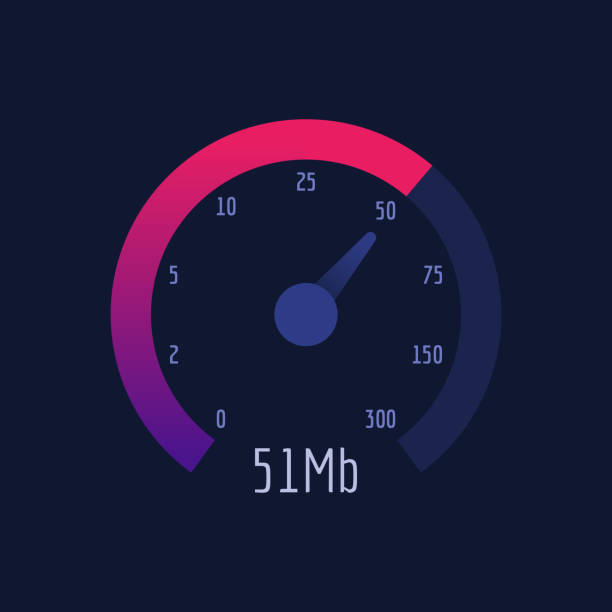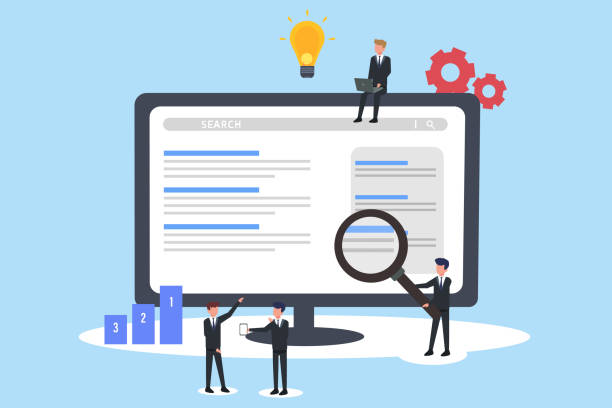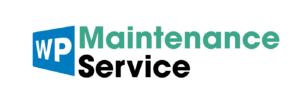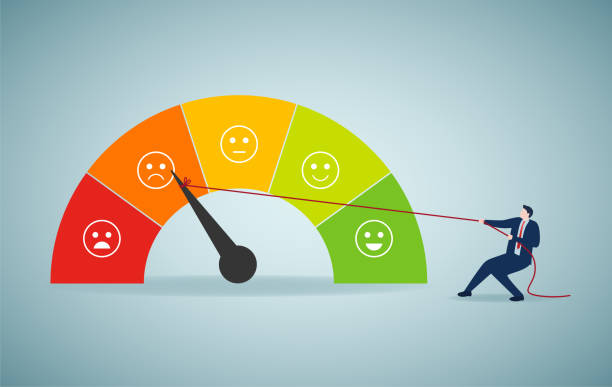Are you looking for ways to increase WordPress speed?
A website’s speed can determine your online business’s success or failure. Yes, it is that important!
According to statistics, for every additional second of loading time, you can suffer a drop in your conversion rate by up to 4.42%.
According to Google Web designer, the acceptable threshold for site loading time is as low as 2 secs. Besides, no one has more time to wait on your website to tons while others’ websites load within a 2nd.
Now the question emerges: How much time does your internet site take to pack? Are you the proprietor of a postponed internet site waiting to shed money for your service? And, certainly! How to enhance the speed of WordPress internet sites?
Don’t stress: You have located a suitable blog site that remedies all the reasons that make your WordPress site slow. Maintain reading this blog to learn how to inspect your website rate and increase your WordPress rate.
Why do you need to increase WordPress website speed?
What are the reasons behind it? Well, speed is one of the essential areas a website owner should care about. There are quite a few reasons you should increase your WordPress website speed. Here are some of them:
- Better SERP ranking: Online search engines are the most effective tool to bring site visitors to your internet site. As well as, if you want to get hold of those places on the first web page of SERP, you must accelerate your website since Google and other prominent online search engines consider speeding a crucial factor in ranking websites.
- Decrease bounce rate: Obtaining site visitors is only practical if they stay on your site for a considerable time and get to your product/service. And also, a slow-moving website will most certainly trigger consumers to leave your site.
- Enhanced individual experience: Better user experience is vital to engage your target market and raising your conversion price. A website with a great loading speed can boost customer experience.
Now you can get an idea of how crucial it is to quicken your website. In the following area, you will discover how to examine your internet site speed and determine whether you require raising your internet site packing rate.
Related: Speed Up Your WordPress Site: 10 Reasons Why Your WordPress Site Has Slow Loading
The importance of optimizing WordPress website speed
The demand for essential goods is increasing, and new business opportunities are becoming more and more visible, even for store owners who didn’t pay much attention to their online presence. Creating a new website or optimizing WordPress website speed is a challenging task and often requires a lot of planning, and that’s something Moof Thriller needs to have right now.
With more than 61.8% market share, WordPress is the dominant CMS platform worldwide, and choosing the right CMS platform is crucial for your business. Simplicity, ease of use, flexibility, security, and upgradability are all things associated with WordPress. It doesn’t matter if you’re running an online publishing business, a web store, or a small business; WordPress has it all. With an army of developers behind it, this platform constantly evolves, adding new features and tools daily.
With limited time, here are the key points to consider if you want a successful online presence.
➢ Speed

Like on a first date, nothing is as important as first impressions. It’s no different with websites. When you click on a link or type in a URL, you want instant feedback – a functioning website with the information you want at your fingertips. With the advancement of the Internet and its speed, the bar is set very high in terms of speed and load times.
Looking at the facts, almost 50% of users expect the website to load in 2 seconds or less. On the other hand, more than 41% leave the website altogether if the loading speed is 3 seconds or more. This means that speed takes precedence over everything else, hence the comparison with the first date.
If speed is the most important thing, what can we do to improve our websites and attract more visitors?
Below is some advice on what to do and how to improve your website.
➢ Fresh and updated

If you have already chosen WordPress as your CMS, you should remember that regular updates will keep your website updated. The same goes for the themes and plugins you use. One of the main focuses of WordPress developers is speed, so you can always expect improvements and optimizations to the core software. So please keep your updates a secret, and do them regularly so that your website performs at its peak, which translates into speed and, thus, traffic.
➢ Fast provider – a fast website

The hosting provider is an essential part of any website. Choose it wisely, and you will thank it over time. Choose a hosting plan that suits your needs and a provider that offers flexibility, advanced security, good backup options, and guaranteed performance, with the option to grow with your needs.
Hosting providers like Hostinger offer many different options and flexible plans that can meet the different needs of websites. Good performance, high security, and flexibility can help you cope with the rush of visitors that you can expect in this time of global turmoil.
➢ Optimization is the key

Since multimedia is the “heaviest” part of any website, optimizing this content is one of the critical factors affecting your website’s speed and loading times. So if you need to upload videos, avoid uploading them directly to your website and use WordPress’ built-in video embedding option. Sites like YouTube and Vimeo are made for videos, and you should take full advantage of their services while taking the load off your website.
Can optimize images with various available plugins that reduce the image size without compromising the image quality. This way, your servers will deliver your website much faster, resulting in shorter loading times, better search engine optimization, and a better user experience.
Caching is one of the clever tricks you can utilize to improve the speed of your website further. Like any other caching, when you open a website, the information is stored in the cache, and the next time you visit a website, this information is provided instead of requesting it from the server. That is ideal for websites that don’t have a lot of daily changes and can significantly reduce the server load, resulting in faster loading and speed.
➢ Speed up your database

The database is the heart of your website, and since the servers access it now and then, the database’s speed reflects your website’s speed. With a fast and responsive database, you have another link in your chain that works faster and further improves the speed and performance of your website. Of course, plenty of plugins can help you declutter the database, delete things you don’t need, and fix and optimize it for you.
How do you test the rate of your website?
Currently, the concern emerges: how can you determine if your website’s filling speed suffices? Well, there are many tools on the market that you can utilize to examine the rate of your internet site.
If you are searching for a free tool, I recommend Google PageSpeed Insight. With this tool, you can test the speed of your website separately for desktop and mobile.
This tool is straightforward to use. Just enter the URL of your website, select the device you want to test the speed on, and click Analyze.
You will then get a performance result based on 100 points. Aim for 90 out of 100 for your website’s performance. Another advantage of this free tool is that it offers you several ways to optimize your website to improve its speed.
Related: How to maintain website performance
Best website speed testing tools
You might be wondering exactly how to test your website speed – luckily, there are various website rate testing tools and mobile website rate examinations to assist you. Below are the ones we suggest:
1. Google PageSpeed Insights
If you are trying to improve the speed of your website and, therefore, your search engine optimization, it is only logical that you turn to a search engine for help. Google PageSpeed Insights is a popular website speed-testing tool that rates your site’s speed on a scale of 0 to 100. The higher the score, the better your website’s performance.
To make up your mobile web traffic, Google PageSpeed Insights can develop examinations for your desktop computer and mobile internet site. The best part is that your rating complies with pointers to improve your website’s efficiency, a few of which you can apply immediately.
Lastly, PageSpeed Insights checks your site against Google’s core web vitals, breaking down the moment it requires to reach each web page tons procedure stage. Core Internet Vitals offer a more nuanced understanding of your web page lots and exactly how it impacts the customer experience.
What we like, such as Google PageSpeed Insights, is intuitive, provides a fair score (along with explanations of that score), and gives workable steps to boost website efficiency.
2. Pingdom
Like Google PageSpeed Insights, Pingdom also rates your site’s speed on a scale of 0 to 100, but this tool is understood to be simpler to navigate and is better suited for beginners.
You can test your site on a site-by-site basis and get your performance score, page load time, page size (broken down by content type), the total number of requests, and suggestions for improving speed. It’s also easy to retest by clicking on your page’s screenshot.
Pingdom also offers more detailed analytics to help everyone, from beginners to experts, troubleshoot problems and make changes quickly. Each of the seven standards for your site’s lots time is provided a letter quality and a detailed description to assist you in prioritizing one of the most critical locations for renovation.
Pingdom is one of the easiest-to-use devices on this checklist. It offers primary and workable understandings of your site’s efficiency that you can promptly edit without overwhelming customers with info.
3. GTMetrix
GTMetrix is one of the leading free online speed examination ideals for beginners. The examination’s public-facing variation does a great job of breaking down performance while maintaining points on the more accessible side.
After finishing the test, you’ll obtain two leading ratings: Efficiency, which GTMetrix claims is your Google Lighthouse performance rating integrated with several of its personalized scores, and Layout, which ranks how well your site is developed for efficiency.
GTMetrix also breaks down the results in several other ways, including a speed visualization that shows your page load time as a timeline with screenshots for each essential web vital, a structured score that shows where you should optimize your page, and a waterfall chart that tracks the load time of each item on the page.
Sign up to run multiple tests with different browsers, sites, and connections, and your free account will save your last 20 tests and associated data. Compare the data from the different tests and download the generated waterfall graphs to find the cause of your site’s slowdown.
What we like: GTMetrix offers more immediate insights than other free options, making it ideal for advanced website owners.
4. WebPageTest
Test your site’s speed in different browsers, on different devices, and in different locations. Developed by a Google Chrome engineer, WebPageTest is a free website speed-testing tool that offers more data and insight than many other free tools (although there’s also a simple testing option if you’re looking for something more straightforward). The tool generates reports and insights to help identify issues and improve site speed.
WebPageTest is also unique in that it phrases its performance summary as questions, “Is it fast?”, “Is it usable?” and “Is it resilient?” contribute to the user’s experience on your pages. The answers to all of these questions are phrased in easy-to-understand terms.
Scroll down, and you’ll see a detailed breakdown of page performance. There’s a visual page load timeline, a waterfall chart, videos of page loading, and an overview of vital web statistics. The test even shows the results of each of the three loadings during the test.
What we like: WebPageTest provides many details from the test, so you know exactly how your page is performing. If you’re not afraid to go in-depth, you should give this tool a try.
5. Sematext
Sematext is a unique DevOps tool that combines all aspects of website monitoring.
Not only does it provide real-time alerts and debugging solutions, support for all major frameworks, end-to-end visibility and observability, but also Sematext Synthetics. The Sematext Synthetics feature allows you to evaluate the speed of your website across multiple sites and devices.
Also necessary are Sematext’s website performance monitoring tools. You can track key web vital statistics and other critical performance metrics, get visualizations to determine which aspects of your site need improvement, and even compare your site’s performance to that of your competitors.
What we like: Sematext doesn’t offer a free website assessment, but users highly regard its performance monitoring offerings and testing tools.
Tips to increase WordPress speed and performance
Disappointed with the results of your website’s speed test? No need to worry; you can continually optimize speed to get the desired result. But how can you improve the speed of WordPress websites?
Here are 11 ways how you can boost the speed of your WordPress website:
1. Choose a faster server
Faster server; I prefer a dedicated server. Initially, it was ubiquitous to choose shared hosting because it is cheap. However, with time, when you become famous and get a good amount of traffic on your website, it is always better to switch to dedicated hosting.
Since shared hosting splits all the resources among several websites, it inevitably negatively impacts your website’s performance. First, most shared web hosting doesn’t provide 99 percent uptime, and the website loading speed could be better during peak hours.
So, if you can afford it, switch to a specialized web server for your WordPress hosting that obtains a significant quantity of web traffic monthly.
Keep in mind: Likewise, make sure to pick a web server close to where you send out the most site visitors to your site. That is because the place of your web server likewise plays a vital role in the rate of your internet site because of numerous elements such as network latency, TTFB (time to the first byte), and so on.
2. Use of a caching plugin
A caching plugin makes a website fast by skipping many steps when loading a web page. It creates a copy of a page after it is generated and then uses that copy for each subsequent user visiting your WordPress website.
Since the WordPress CMS is dynamic, every time someone tries to access your website, a caching plugin is used to repeat all the operations and retrieve all the data from the WordPress database, which puts a lot of load on your server and thus makes the website very slow.
So, use a caching plugin for your website to increase the speed of WordPress. You can combine advanced caching mechanisms like Varnish with plugins to improve your website loading speed.
3. Reduce HTML, CSS, and Javascript
While you require HTML, CSS, and Javascript to establish and run your WordPress website, your website can only lag if optimized. For this reason, experts recommend that you always minimize your HTML, CSS, and Javascript code.
Mining the code does not affect the functions of your website. It just removes unused code and replaces the names of variables and functions with shorter names. The result is shorter load times and lower bandwidth usage for your websites. So, if your website doesn’t currently use mining codes, you should quickly minify the code to improve WordPress speed.
4. Remove Render Blocking Javascript and also CSS
Eliminate Render Obstructing Javascript and CSS, as the name recommends, blocks your website from packing before these manuscripts are loaded. That is a location that Google Pagespeed Insights often recommends for renovation.
Most JavaScript scripts are used to add animations or popups to a website that are not needed until the website is fully loaded. That can cause your website to load sluggishly. You can remove these rendering-blocking codes so that they load later and do not affect the actual loading speed of your website. That is an effective way to improve the speed of WordPress websites.
5. Choose a light and fast theme
A website is a visual way of marketing your products and services, and it’s just natural to be tempted to choose a plugin with too many animations and features. However, if too many animations and additional features slow down your website, it is useless.
I’m not suggesting that you go for a boring website, but make sure that loading speed is on your checklist when choosing your WordPress theme. Finding the right balance between the features and animations you want on your website and the loading speed would be best.
6. Optimize your WordPress website’s images, media, and database
Over time, your website becomes a warehouse of unused images and media, which can increase the size of your website and thus affect loading speed. The same is valid for databases. An unoptimized database stores unnecessary information that affects WordPress website speed.
So, check whether your website is filled with unnecessary images and media files. And if it is, clean them up. Also, optimizing your images before uploading them is always a good idea. Minimized media dimensions, like maximized picture and data source dimensions, will also reduce the speed of your site.
7. Use a CDN (Content Delivery Network)
While it’s a good idea to set up a server near the location of your frequent visitors, more is needed to serve all the visitors to your website. And CDN solves this problem for you.
Material Distribution Network (CDN) keeps a duplicate of the site in various information centers in various areas of the globe. By doing this, you can be confident that your site will load at a specific rate, no matter the area where a person attempts to access your internet site.
Keep in mind: You can use Cloudflare as a CDN service.
8. Disable pingbacks and trackbacks
Pingbacks and trackbacks are excellent for learning when one of your blog sites or websites gets a link. While they are great, you must know that these links can put an unwanted load on your server.
Also, if you enable these two features, you are at risk of DDoS attacks. So, to optimize WordPress speed and protect your website from DDoS attacks, you should disable pingbacks and trackbacks. You can easily disable them from the WordPress admin dashboard.
9. Uninstall unused plugins and themes
Storing these data on your web server is unnecessary if you are not using plugins or styles. The larger your website is, the slower it is likely to load. So, uninstall all WordPress plugins and Themes you are not using.
Along with uninstalling, you likewise require to focus on whether or not updates are readily available for your styles and also plugins. If yes, after that, update them, of course.
10. Use the latest version of PHP
One thing you must include in the website speed improvement checklist is the PHP version of your website. Using the latest PHP version is recommended to maintain the speed of your website.
However, start using something other than the latest PHP version because your WordPress, theme, and other plugins must also be compatible with the PHP variation you are using on your website. So, check if themes and plugins are compatible with the latest PHP version and then upgrade to that version.
11. Reduce the number of post revisions
We know you probably wouldn’t have thought that you would find this option in the “Tips to improve WordPress website speed” list. Multiple post revisions can affect the speed of your website. Every time you save a draft, WordPress saves it indefinitely. These different versions saved on your website can affect the speed of your website.
However, you only need one version, the latest and optimized version. Therefore, you need to keep the number of post revisions on your website as low as possible. You can set a minimum number of revisions with a plugin or do it manually by including “define( ‘WP_POST_REVISIONS,’ 4 );” in your wp-config.php file.
The Bottom Line
Now you know how to improve WordPress website speed to fix your lagging website and make it super fast. Try these tips to increase WordPress speed.
The tips we’ve given to improve WordPress speed may include things you’re already using. If that’s the case, then you’re already on the right track, but also try the other tips you still need to start using on your site.
If you follow the actions, you will see terrific leads to your site filling speed and WordPress performance.
A good loading website means a great user experience, and a more extraordinary user experience can lead to higher revenue. So always pay attention to the importance of your website speed.
Get Started Today With Wp Maintenance Service
If you’re looking for web hosting providers to help you provide web hosting & expert management for thousands of WordPress websites, we’d be happy to discuss our services. Contact us now for web hosting services and to see how you can get started.

